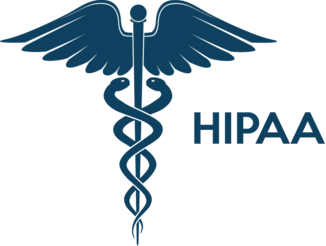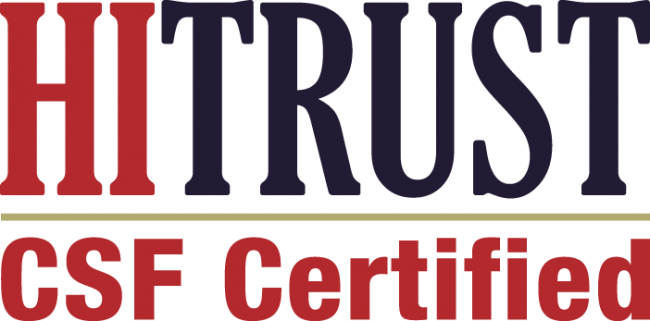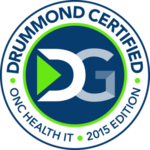Healthcare referral networks form the backbone of coordinated patient care, connecting primary care providers with specialists and ensuring patients receive the right care at the right time. Understanding the dynamics of both inbound and outbound referrals is crucial for healthcare organizations looking to optimize patient outcomes while maintaining operational efficiency and building strong professional relationships.
Understanding Healthcare Referrals
A healthcare referral occurs when one healthcare provider directs a patient to another provider for specialized care, diagnostic services, or treatment that falls outside their scope of practice. This system ensures patients receive comprehensive care while allowing providers to focus on their areas of expertise.
The referral process involves multiple stakeholders: referring providers, receiving providers, patients, insurance companies, and healthcare administrators. Each party has distinct needs and expectations that must be balanced for the system to function effectively.
Inbound Referrals: Building Your Specialist Practice
Inbound referrals represent patients directed to your practice from other healthcare providers. For specialists, these referrals often constitute the majority of new patient volume and are essential for practice growth and sustainability.
Types of Inbound Referrals
Primary Care Referrals form the foundation of most specialist practices. Family physicians, internal medicine doctors, and pediatricians refer patients when they encounter conditions requiring specialized expertise. These referrals typically involve ongoing conditions that need specialized management or diagnostic procedures beyond primary care capabilities.
Specialist-to-Specialist Referrals occur when one specialist needs expertise from another specialty. For example, a cardiologist might refer a patient to an endocrinologist for diabetes management that’s complicating cardiac treatment or to a cardiac surgeon for surgical intervention.
Emergency Department Referrals happen when patients present to emergency departments with conditions requiring follow-up specialty care. These referrals often involve urgent or semi-urgent conditions that need timely specialist intervention.
Hospital Discharge Referrals connect inpatients with outpatient specialists for continued care after discharge. These referrals ensure continuity of care and prevent readmissions by establishing appropriate follow-up.
Self-Referrals and Direct Access occur when patients directly contact specialist offices, though many specialists require referrals for insurance authorization. Some specialties and insurance plans allow direct access, particularly for certain routine services.
Inbound Referral Management Strategies
Streamlined Intake Processes are fundamental to managing inbound referrals effectively. Establish clear procedures for receiving referrals, whether through electronic health records, fax, phone calls, or online portals. Designate specific staff members to handle referral intake and ensure they understand the information needed for each referral type.
Create standardized referral forms that capture essential information, including patient demographics, insurance details, clinical history, current medications, reason for referral, urgency level, and specific questions the referring provider wants addressed. This consistency reduces back-and-forth communication and speeds up the scheduling process.
Rapid Response Systems demonstrate your commitment to referring providers and their patients. Acknowledge receipt of referrals within 24 hours and provide realistic timeframes for scheduling appointments. For urgent referrals, establish protocols for same-day or next-day appointments when clinically appropriate.
Implement triage systems that categorize referrals by urgency level. Train staff to recognize urgent referrals that need immediate attention versus routine referrals that can be scheduled within standard timeframes. This ensures patients with serious conditions receive timely care while managing workflow efficiently.
Clear Communication Channels with referring providers build trust and encourage continued referrals. Provide multiple ways for referring offices to submit referrals and ask questions. Consider offering direct phone lines for referring providers to discuss cases or check on referral status.
Establish expectations for response times and communication protocols. Let referring providers know when they can expect scheduling confirmation, appointment reminders, and consultation reports. Consistent communication reduces anxiety for both referring providers and patients.
Technology Integration can significantly improve referral management efficiency. Electronic health record integration allows seamless referral submission and tracking. Automated acknowledgment systems confirm receipt of referrals and provide reference numbers for tracking purposes.
Consider implementing patient portals where referred patients can complete pre-visit paperwork, upload relevant documents, and communicate directly with your office. This reduces administrative burden while improving patient engagement.
Best Practices for Inbound Referrals
Prioritize Patient Experience from the first point of contact. Train front desk staff to handle referral calls with empathy and professionalism. Explain the referral process clearly to patients and set appropriate expectations for appointment scheduling and what to expect during their visit.
Provide comprehensive pre-visit information, including office location, parking instructions, what to bring, how to prepare for the appointment, and what insurance information is needed. This reduces patient anxiety and ensures appointments proceed smoothly.
Maintain Professional Relationships with referring providers through consistent, professional communication. Send timely consultation reports that address the specific questions posed in the referral. Include clear recommendations for ongoing care and specify whether follow-up with your office is needed.
Consider periodic outreach to key referring providers to discuss referral patterns, address any concerns, and explore opportunities for improved collaboration. These relationships are built on trust and mutual respect, which develop through reliable, high-quality service.
Track and Analyze Referral Patterns to identify opportunities for improvement. Monitor referral sources, conversion rates from referral to scheduled appointment, no-show rates, and patient satisfaction scores. This data helps identify which referring relationships are most valuable and where improvements are needed.
Regular analysis might reveal that certain referring providers consistently send appropriate referrals with complete information, while others might need additional education about when to refer or what information to include.
Quality Assurance Programs ensure that inbound referrals receive consistent, high-quality care. Establish protocols for reviewing referral appropriateness, ensuring timely scheduling, and following up on missed appointments or incomplete workups.
Regular staff training on referral management procedures keeps everyone aligned with best practices and helps identify areas for improvement. Consider appointing a referral coordinator who oversees the entire process and serves as the primary point of contact for referring providers.
Outbound Referrals: Connecting Patients with Appropriate Care
Outbound referrals involve directing your patients to other healthcare providers for services outside your scope of practice. Effective outbound referral management ensures patients receive comprehensive care while maintaining care coordination and professional relationships.
Types of Outbound Referrals
Diagnostic Referrals direct patients to facilities or providers for specific tests or procedures that your practice doesn’t perform. This might include advanced imaging studies, specialized laboratory tests, or diagnostic procedures requiring specific equipment or expertise.
Treatment Referrals occur when patients need interventions beyond your practice’s capabilities. These might involve surgical consultations, specialized therapies, or treatments requiring equipment not available in your practice.
Ongoing Management Referrals connect patients with specialists who will assume primary responsibility for managing specific conditions. For example, a primary care provider might refer a patient with complex diabetes to an endocrinologist for ongoing management.
Emergency Referrals involve urgent situations requiring immediate specialist attention. These might include suspected heart attacks, strokes, or other conditions requiring emergency intervention.
Collaborative Care Referrals establish ongoing relationships between your practice and specialists for patients who need coordinated care from multiple providers. These referrals often involve complex patients with multiple comorbidities.
Outbound Referral Management Strategies
Comprehensive Referral Networks ensure you can connect patients with high-quality specialists across all necessary areas. Develop relationships with multiple providers in each specialty to accommodate patient preferences, insurance requirements, and appointment availability.
Research specialists’ credentials, patient satisfaction scores, and practice characteristics before adding them to your referral network. Consider factors like communication style, responsiveness, and alignment with your practice’s approach to patient care.
Standardized Referral Processes ensure consistency and completeness in your outbound referrals. Develop templates for referral letters that include all necessary clinical information, clear questions you want the specialist to address, and your expectations for communication back to your practice.
Train staff on referral procedures, including how to verify insurance requirements, obtain prior authorizations when needed, and communicate with receiving practices. Consistent processes reduce errors and improve efficiency.
Patient-Centered Referral Decisions involve patients in the referral process and consider their preferences, concerns, and practical considerations. Discuss why the referral is necessary, what patients can expect from the specialist visit, and address any concerns they might have.
Provide patients with information about referred specialists, including office locations, contact information, and what to expect during their visits. This preparation helps ensure patients follow through with referrals and have positive experiences.
Insurance Navigation helps patients understand coverage requirements and avoid unexpected costs. Verify insurance requirements for referrals, including whether prior authorization is needed and whether patients must see in-network providers.
Assist patients with prior authorization processes when required, and help them understand their insurance benefits and potential out-of-pocket costs. This support reduces barriers to accessing specialist care.
Best Practices for Outbound Referrals
Thorough Documentation ensures receiving providers have all information needed to provide effective care. Include comprehensive clinical histories, current medications, relevant test results, and specific questions you want addressed.
Communicate the urgency level and your expectations for follow-up communication. Specify whether you want a consultation report, ongoing shared care, or transfer of care to the specialist.
Follow-Up Systems ensure patients receive the specialist care you’ve recommended. Implement tracking systems to monitor whether patients schedule and attend specialist appointments. Follow up with patients who don’t schedule appointments to understand barriers and provide additional support.
Establish protocols for reviewing specialist recommendations and integrating them into ongoing patient care. This might involve reviewing consultation reports, adjusting medications, or coordinating additional referrals.
Quality Monitoring helps ensure your referral network continues to provide high-quality care. Track patient satisfaction with referred specialists, monitor communication quality from receiving providers, and assess outcomes of referrals.
Regularly review your referral patterns to identify opportunities for improvement. This might reveal specialists who consistently provide excellent care and communication, as well as those who might need additional feedback or replacement in your referral network.
Patient Education and Support improves referral completion rates and patient satisfaction. Provide clear explanations of why referrals are necessary and what patients should expect from specialist visits. Address common concerns and misconceptions about seeing specialists.
Consider providing written information about referred specialists, including preparation instructions and questions patients might want to ask during their visits. This preparation helps ensure productive specialist encounters.
Optimizing the Referral Network
Successful healthcare referral networks require attention to both inbound and outbound referral management. The most effective practices excel at both aspects, creating seamless experiences for patients while building strong professional relationships.
Technology Solutions can streamline referral processes on both sides. Electronic health record integration allows automatic referral submission, tracking, and follow-up. Automated systems can send acknowledgments, appointment confirmations, and reminders to reduce manual administrative work.
Consider implementing referral management platforms that provide visibility into referral status, enable secure communication between providers, and track outcomes. These systems help identify bottlenecks and opportunities for improvement.
Performance Metrics help monitor and improve referral network effectiveness. Track metrics like referral completion rates, time from referral to appointment, patient satisfaction scores, and communication quality between providers.
Regular analysis of these metrics can reveal patterns and opportunities for improvement. For example, consistently low completion rates for referrals to a particular specialist might indicate access problems or patient satisfaction issues that need addressing.
Continuous Improvement Processes ensure referral networks evolve to meet changing needs. Regularly survey patients about their referral experiences and use feedback to improve processes. Conduct periodic reviews with key referring and receiving providers to identify improvement opportunities.
Stay informed about changes in healthcare delivery models, insurance requirements, and technology solutions that might improve referral management. The healthcare landscape continues evolving, and referral networks must adapt accordingly.
Professional Development keeps staff current on best practices in referral management. Provide training on communication skills, insurance navigation, and technology systems. Consider appointing referral coordinators who can develop specialized expertise in managing complex referral networks.
Encourage participation in professional organizations and continuing education programs focused on care coordination and referral management. This investment in staff development pays dividends through improved patient experiences and stronger professional relationships.
Building Sustainable Referral Networks
The most successful healthcare referral networks are built on mutual trust, respect, and commitment to patient care. Both referring and receiving providers must view referrals as opportunities to improve patient outcomes rather than simply administrative transactions.
Long-term Relationship Building creates stable, reliable referral networks that benefit everyone involved. Invest time in getting to know other providers in your network, understanding their practices and capabilities, and building personal relationships that extend beyond individual referrals.
Regular communication with network providers helps identify new opportunities for collaboration and address any issues before they become problems. Consider organizing periodic meetings or social events that bring together providers in your referral network.
Value-Based Care Alignment increasingly influences referral decisions as healthcare moves toward value-based payment models. Consider how referral decisions impact overall patient outcomes, costs, and quality metrics. This might involve referring to providers who demonstrate strong outcomes in specific areas or who participate in shared savings programs.
Patient-Centered Approach keeps the focus on what’s best for patients rather than what’s most convenient for providers. This means making referral decisions based on patient needs, preferences, and circumstances rather than purely on provider convenience or financial considerations.
The future of healthcare referral networks lies in seamless integration, shared accountability for patient outcomes, and technology-enabled coordination that makes the patient experience as smooth as possible while supporting providers in delivering high-quality care.
Conclusion
Optimizing both inbound and outbound referrals requires a systematic approach that prioritizes patient care while building strong professional relationships. The most successful practices view referral management as a strategic capability that differentiates them in competitive healthcare markets.
By implementing comprehensive referral management strategies, leveraging appropriate technology solutions, and maintaining focus on continuous improvement, healthcare providers can create referral networks that improve patient outcomes, enhance provider satisfaction, and support practice growth. The investment in building these capabilities pays dividends through stronger professional relationships, improved patient experiences, and better clinical outcomes across the entire healthcare network.
Modern referral management platforms, such as HealthViewX Referral Management, provide the technological foundation needed to implement these best practices effectively. They offer integrated solutions that streamline both inbound and outbound referral workflows, maintaining a focus on patient-centered care and provider collaboration that drives successful healthcare networks.








